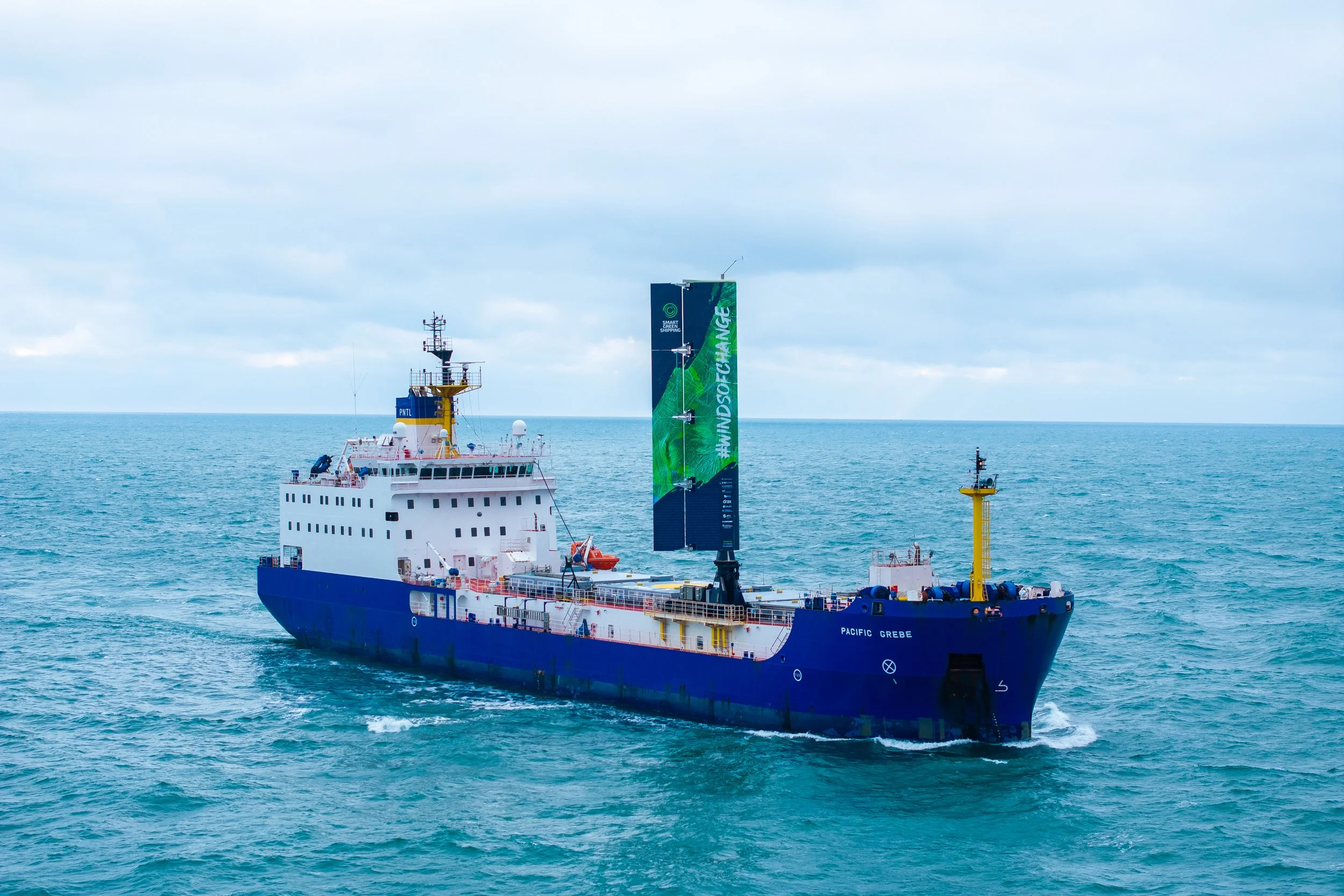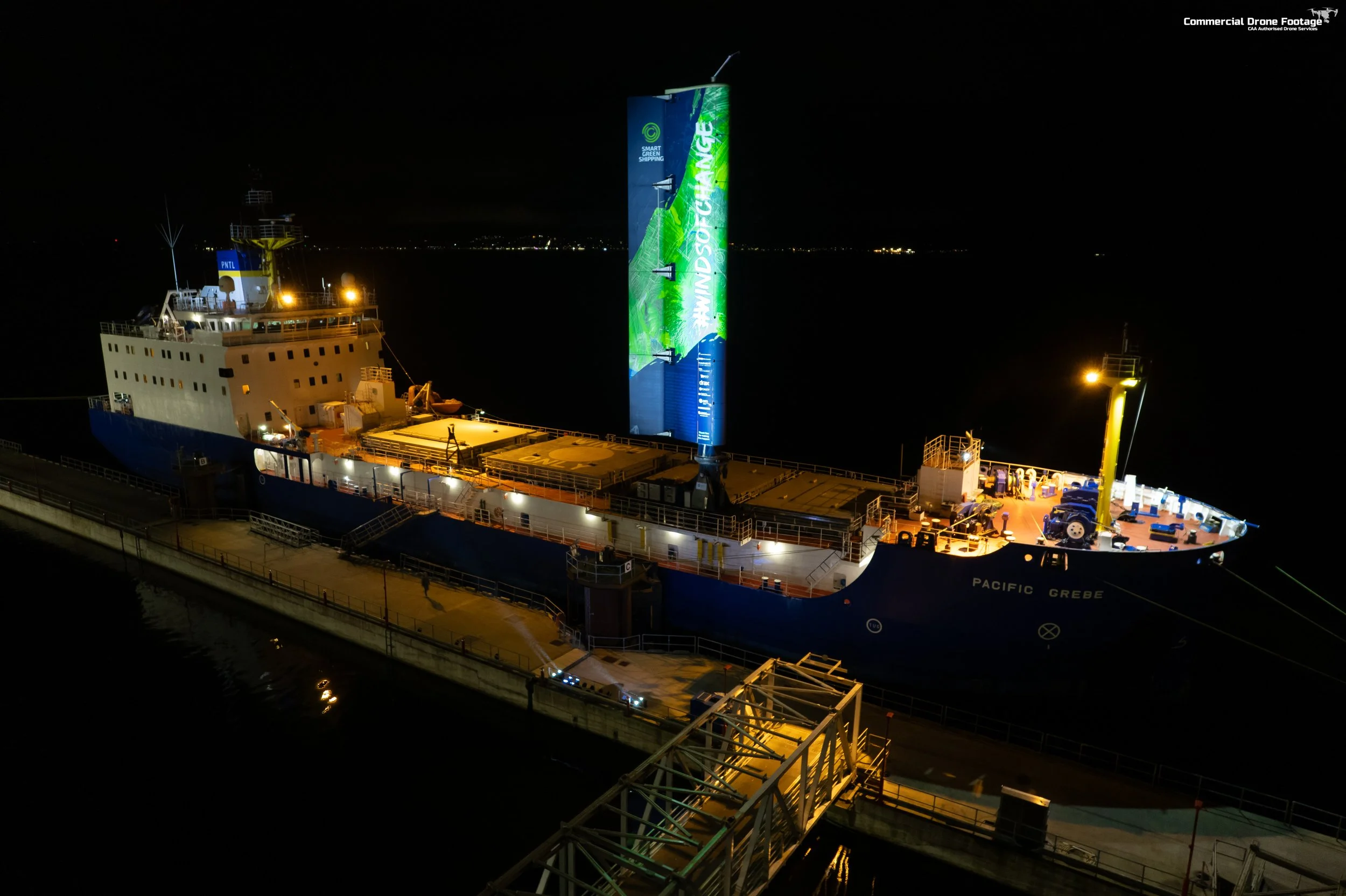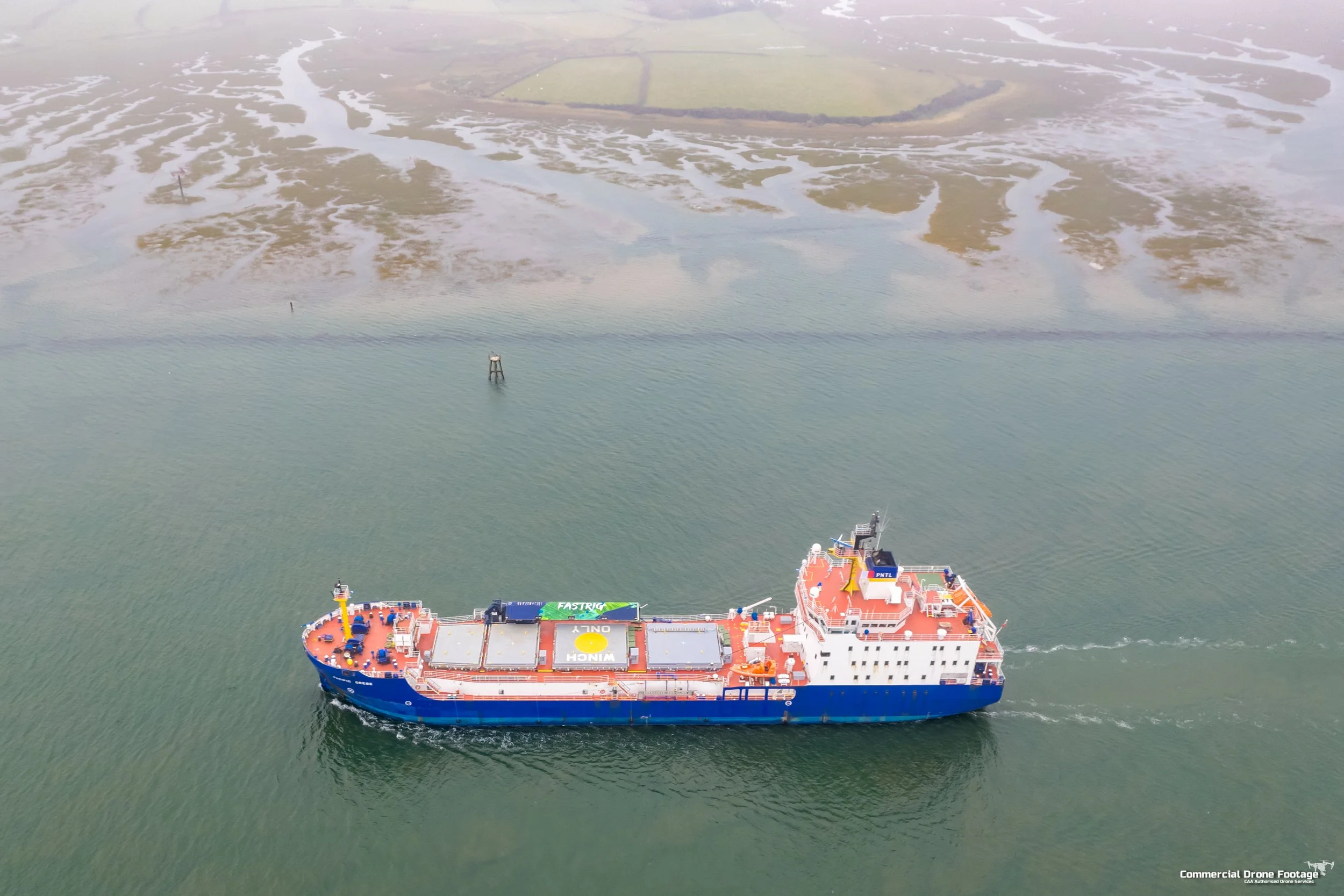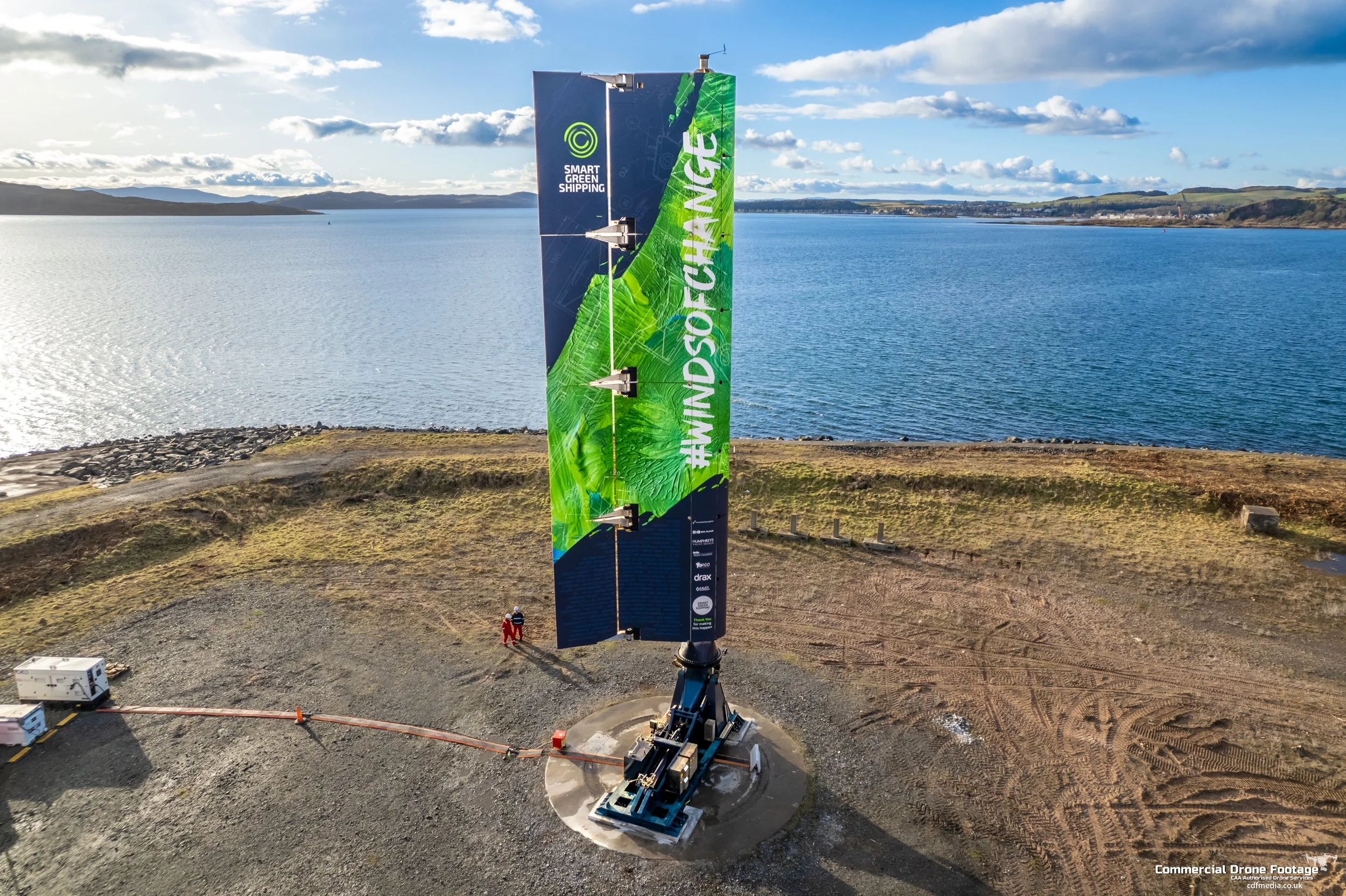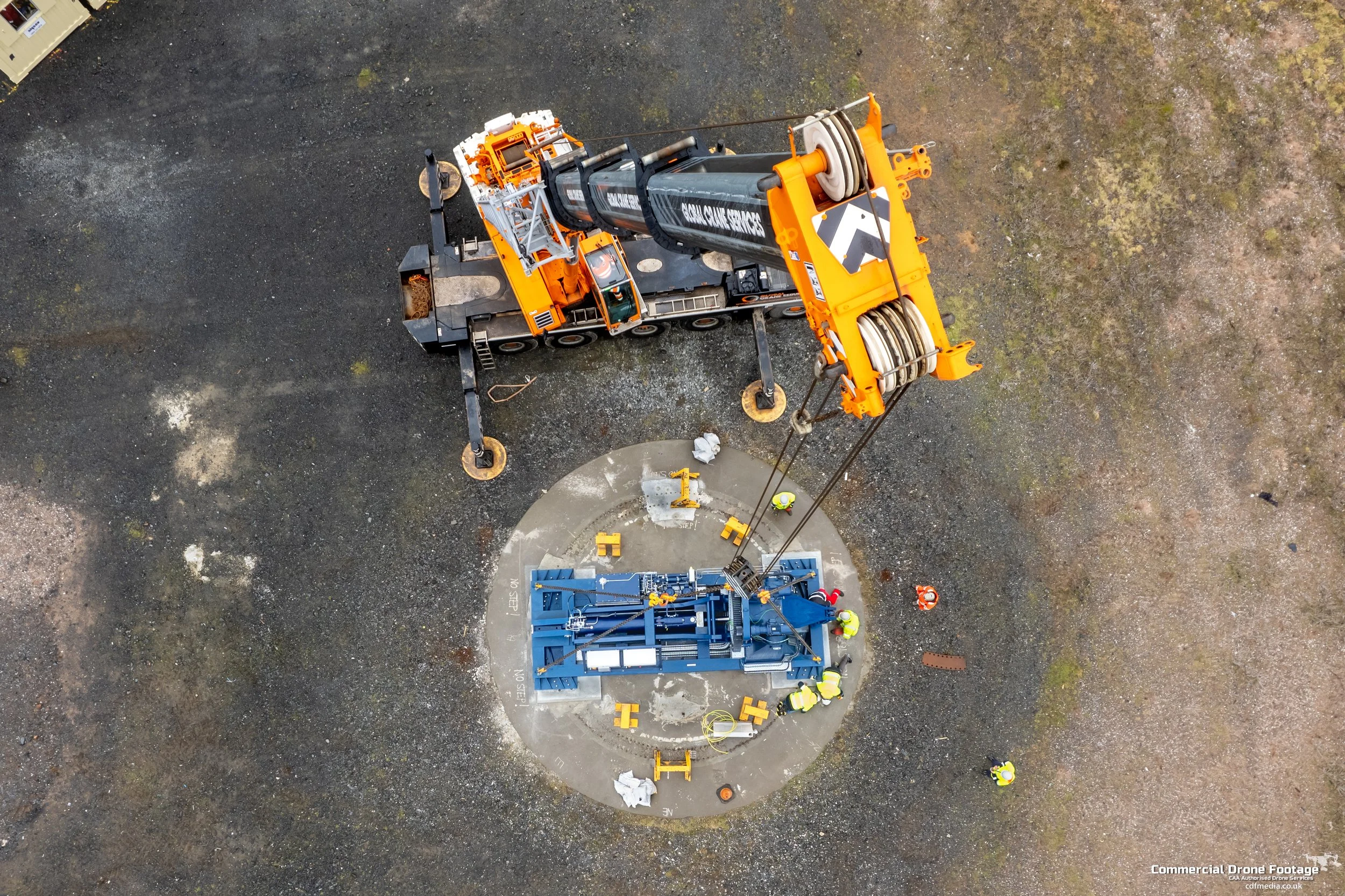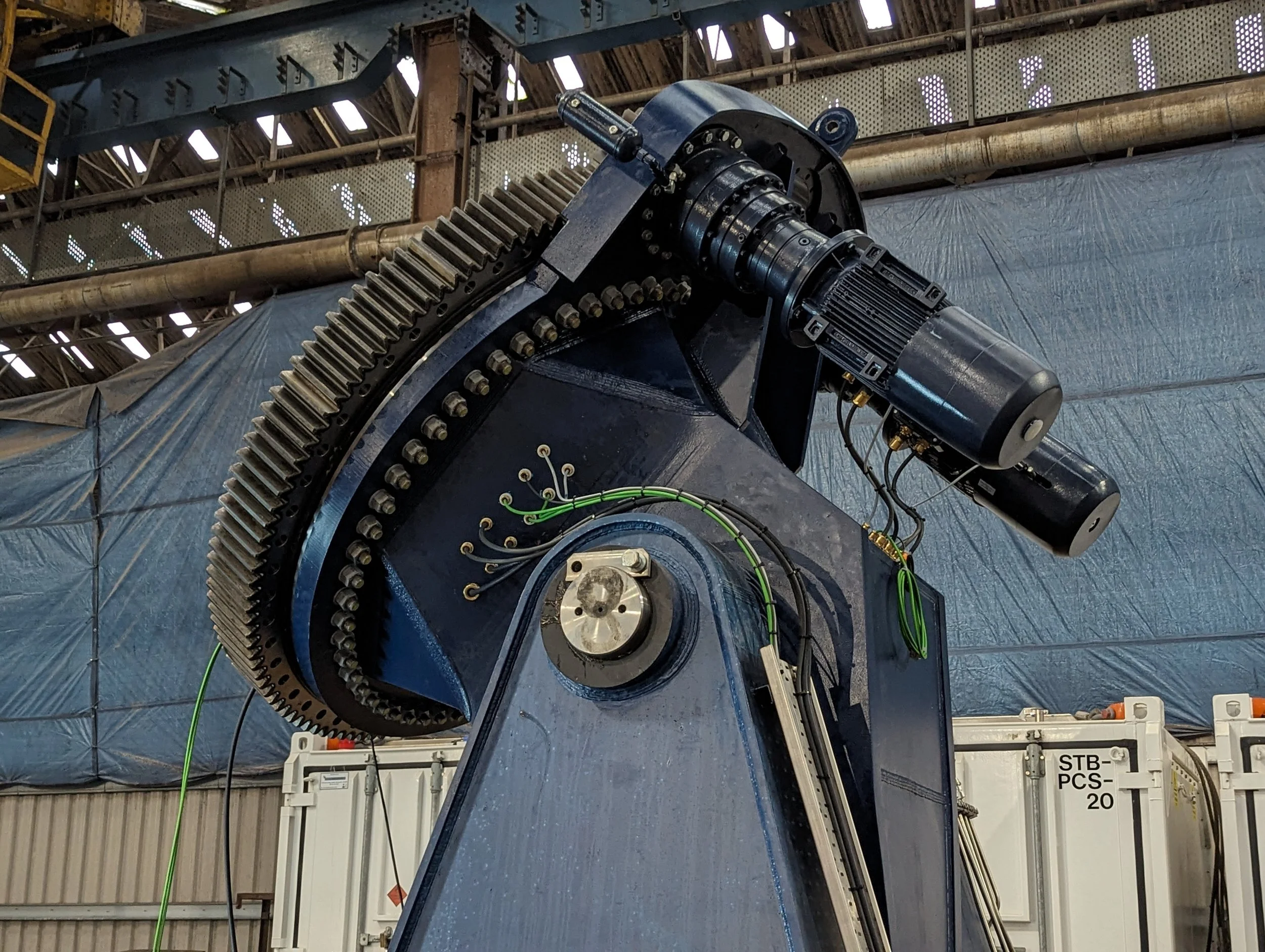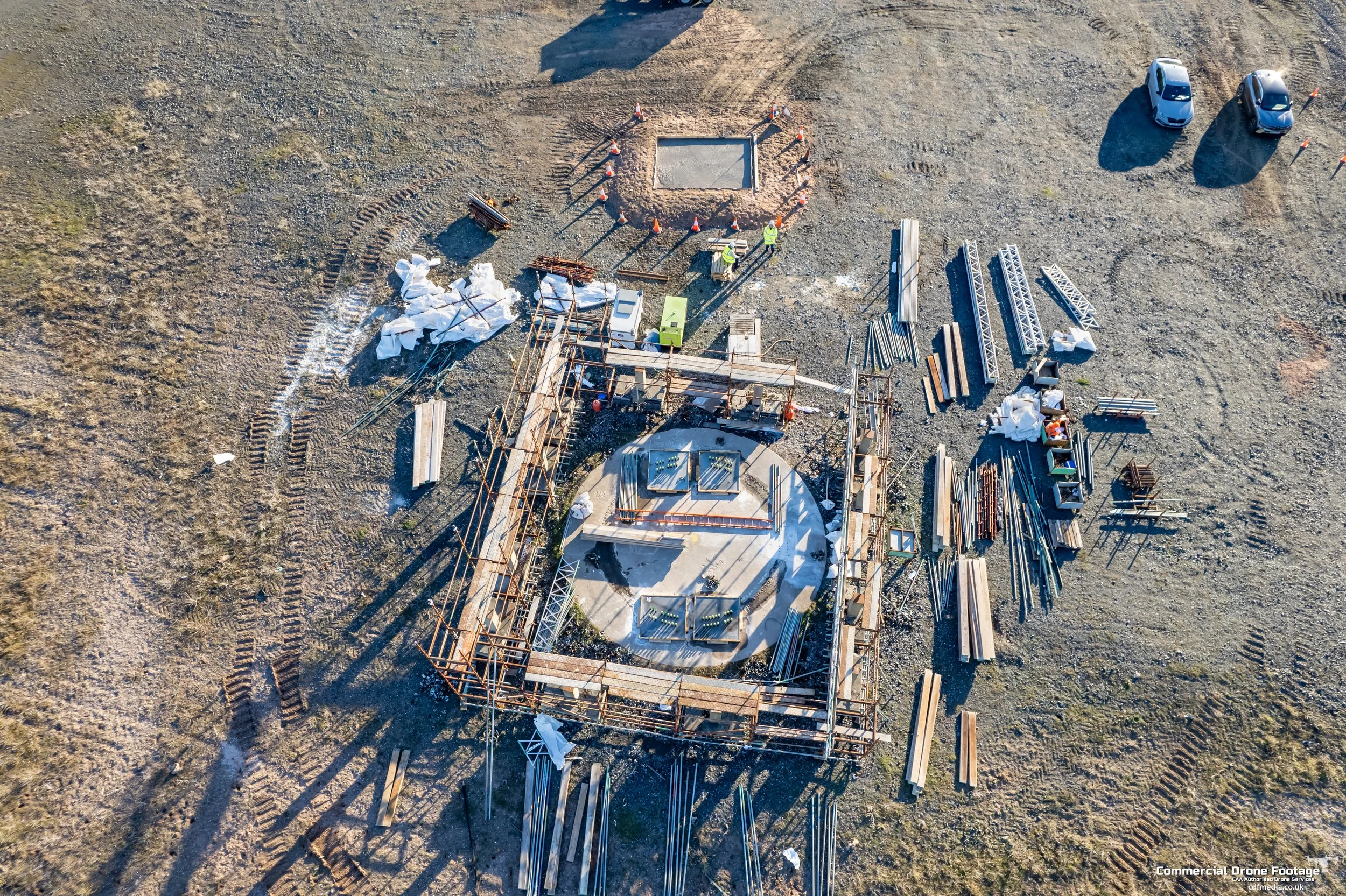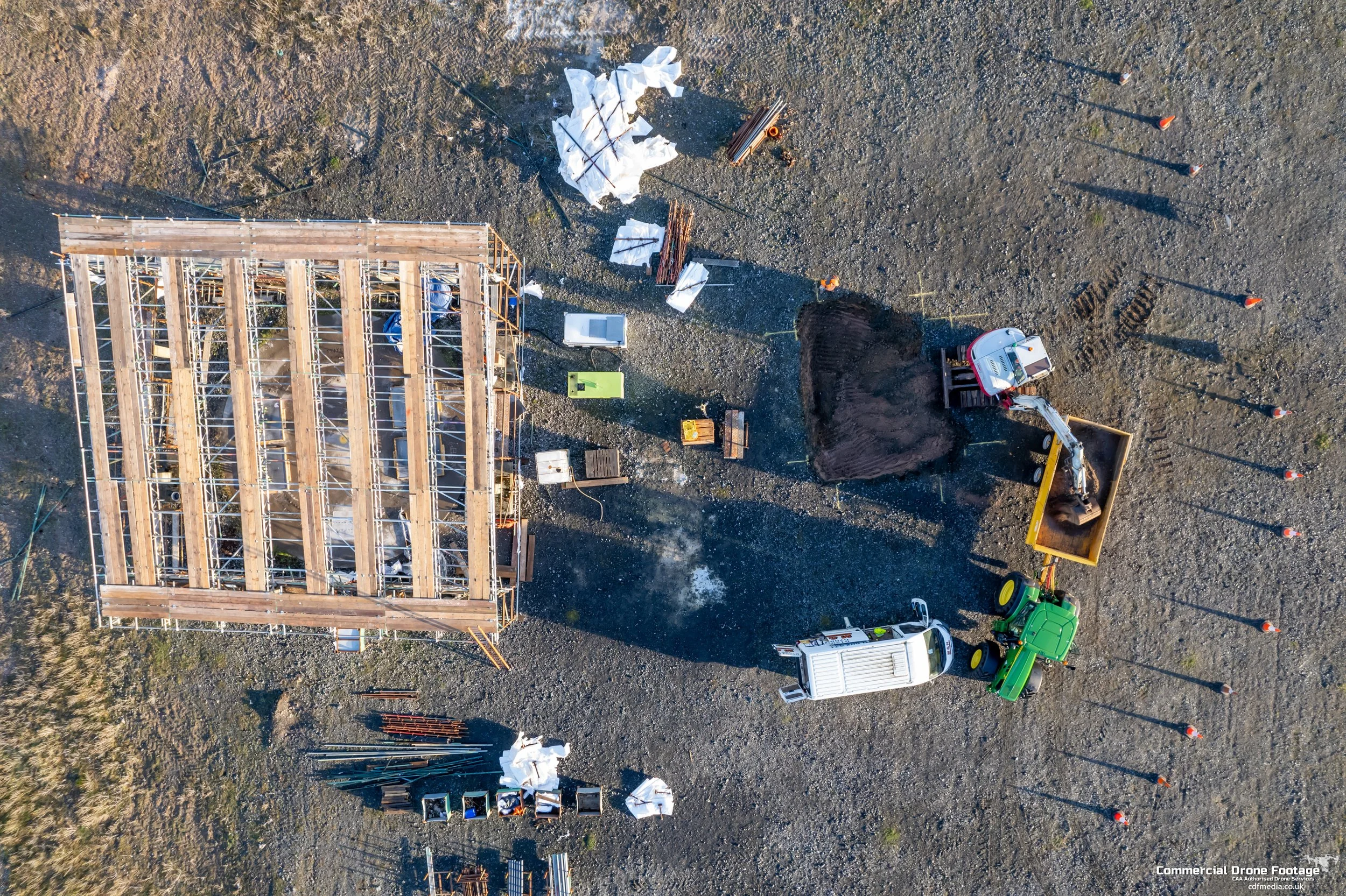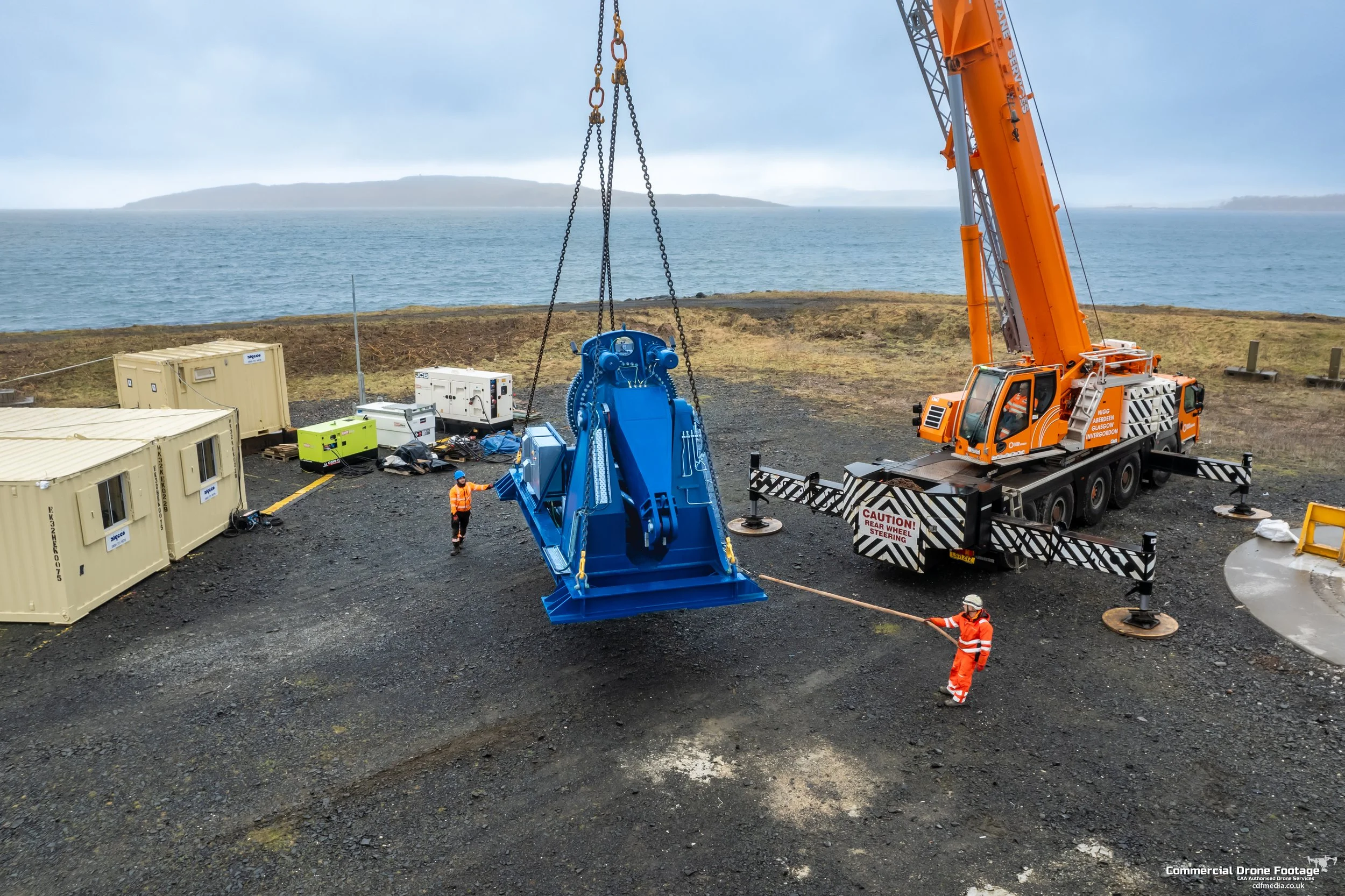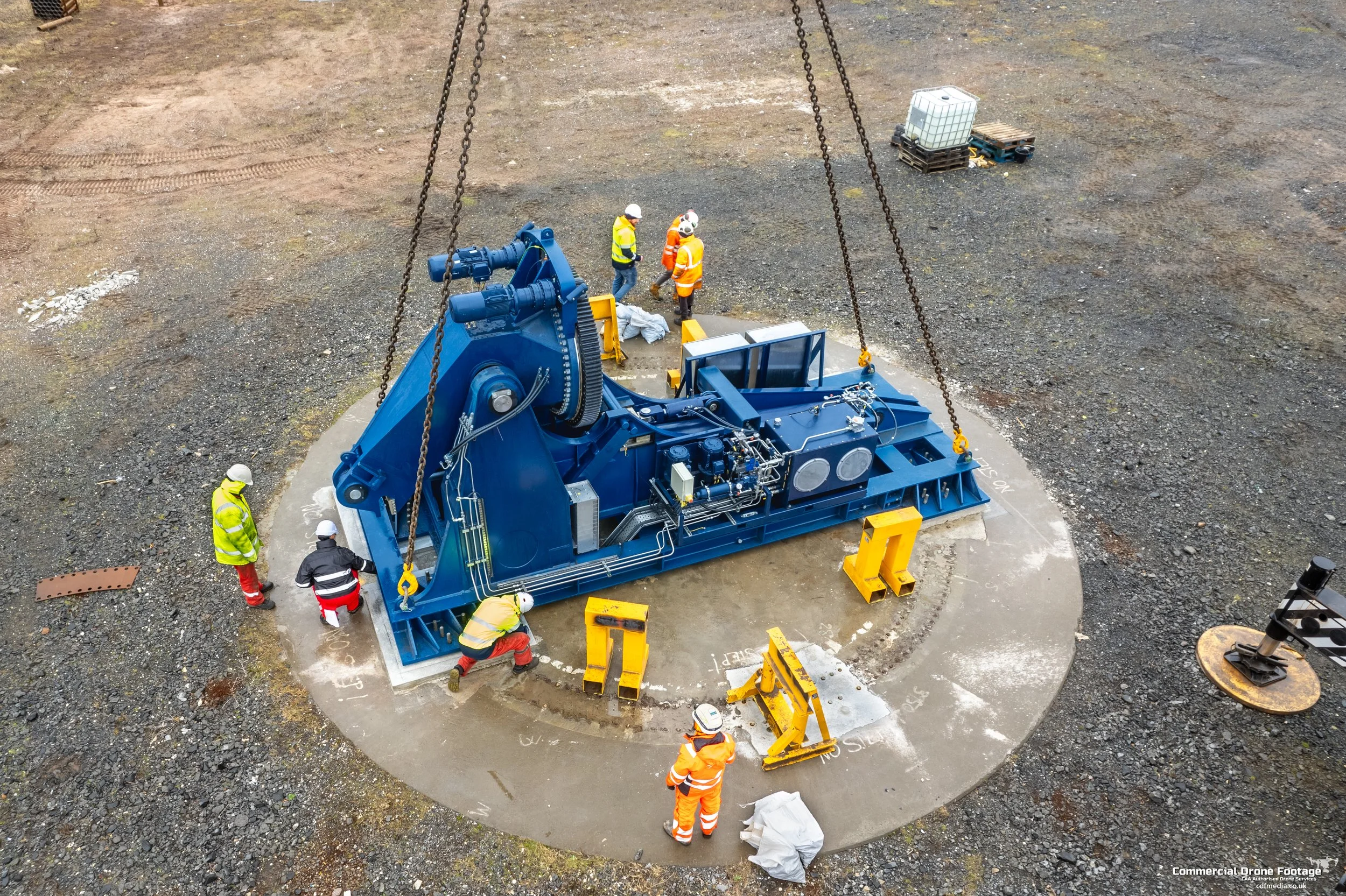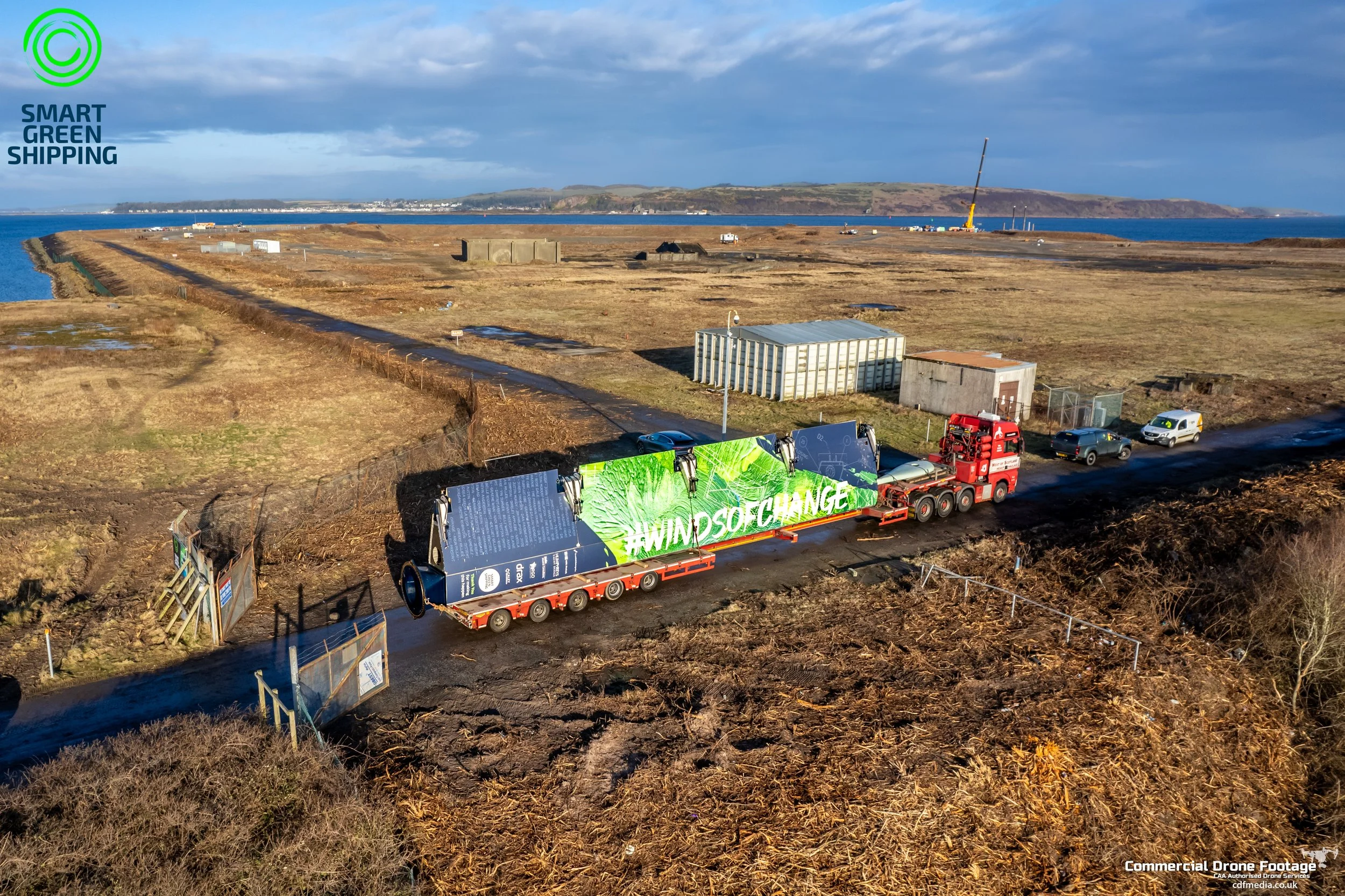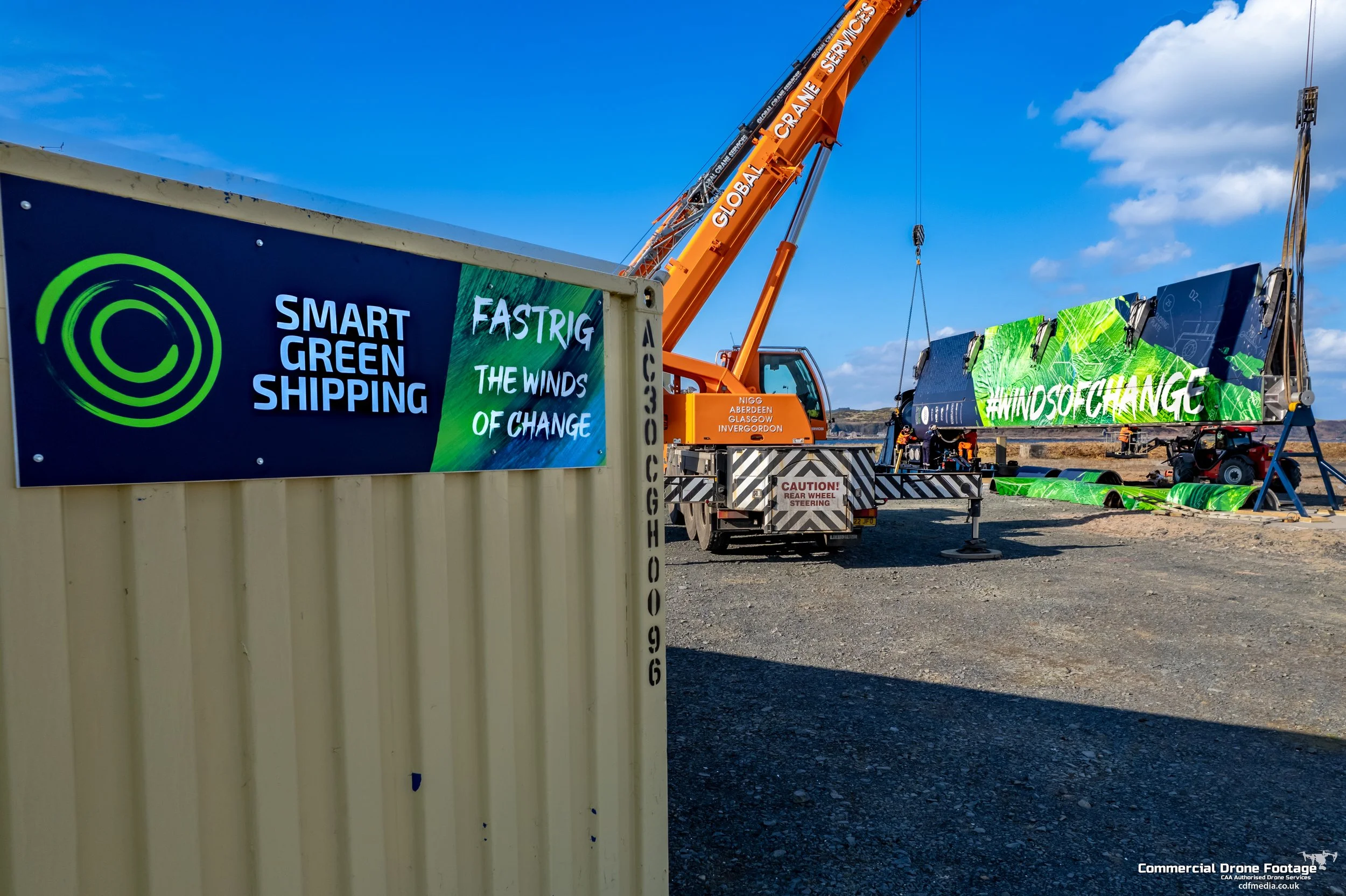
The Winds of Change
Smart Green Shipping has achieved critical milestones through its Winds of Change collaboration with University of Southampton, with funding from the UK Government, successfully validating its FastRig wind-assist technology through rigorous land trials at Hunterston and world first ITTC protocol sea trials aboard the MV Pacific Grebe. This initiative marks a transformative step in reducing shipping emissions by 40% through retrofittable wing-sail system.
Find out more about the project in our Winds of Change Podcast
FastRig – a lightweight, recyclable aluminium wing-sail – was installed and decommisioned dockside on Nuclear Transport Solutions' MV Pacific Grebe in late 2024, avoiding dry-dock delays and demonstrating rapid deployment capabilities. The installation and subsequent land and sea trials validated:
Safety & robustness: Lloyd’s Register and Maritime & Coastguard Agency certified the system’s compliance with maritime safety standards.
Ease of operation: Crew-operated controls proved intuitive, with automated ajustments for weather conditions.
Fuel savings: Real-world data matched University of Southampton performance predictions.
A full report on the trials will be released in due course.
The installation, sea trials, and deinstallation were managed by SGS, supported by our dedicated collaborators who were responsible for key, specific areas of responsibility. Our dedicated team includes:
-
Humphreys Yacht Design (HYD) has been providing naval architectural services and support to Smart Green Shipping since 2008. With a rich heritage spanning 50 years in racing, production and large custom yacht sectors including multiple Round-The-World racing yacht formats and involvement in diverse projects, they have acquired a unique combination of knowledge and expertise in understanding the complexities and intricacies of wind propulsion and its integration in the commercial sector.
HYD have undertaken the development and analysis of various concepts for SGS, aimed at reducing emissions and incorporating wind-assisted propulsion in the commercial shipping sector. They first developed the FastRig concept for SGS in response to a set of requirements from Drax for a retrofittable wind-assisted propulsion system suitable for large bulk carriers that they typically charter, ensuring minimal impact on existing ship and port operations.
HYD's work involves the conceptualisation, outline design, and evaluation of the FastRig, focusing on its functional and aerodynamic aspects. With decades of experience, they have honed their methods, utilising advanced design tools and techniques to assess the impact of a FastRig installation on a specific vessel in terms of hydrostatics, stability, performance and other design aspects.
-
The Marine and Maritime Institute at the University of Southampton (SMMI) is renowned for its expertise in various aspects of the maritime industry, ranging from ship safety and efficiency to renewable energy, sailing yacht performance, environmental science, maritime law, and decarbonising technologies. Two of its notable components are the Maritime Engineering Group, providing world leading research into ship resistance and propulsion and the Wolfson Unit for Marine Technology and Industrial Aerodynamics (WUMTIA), which specializes in experimental and computational testing of hull and sail performance. Collaborating with SGS for many years, they provide aerodynamic modelling and insights into wind-propelled vessel performance.
In the Winds of Change project, their primary focus is on developing a performance prediction algorithm that considers both aero and hydrodynamic forces on a wing-propelled ship. This algorithm aims to forecast the vessel's speed and fuel consumption under different wind conditions. Initially, it will be applied to the Pacific Grebe demonstration vessel for validation before being used to predict the performance of multiple FastRigs on a larger commercial vessel.
Utilizing Computational Fluid Dynamics (CFD), they can accurately predict the aero and hydrodynamic forces on a vessel equipped with wing propulsion technology. Additionally, they are conducting model scale experiments in their 138m towing tank and large section wind tunnel to validate these numerical predictions. This research will provide valuable insights into hydrodynamic interactions affecting the vessel's performance, including the impact of sailing at a leeway angle on propeller and rudder efficiency.
-
The Argo team has extensive experience in the design and construction of large free-standing carbon superyacht rigs, as well as involvement in various windship projects. Over the course of more than 2 years, they have played a key role in shaping the arrangements and structure of SGS’ FastRig wing. What initially began as an advisory position quickly evolved into a central role within the design team, defining the approval in principle arrangements of the wing structure and the base luffing arrangements.
Argo has provided SGS with structural consultancy, aluminium cut-part information, on-site design support during assembly, and composite fairing components for the wing. Their broad expertise in marine structures and materials enables them to offer material-agnostic advice for effectively and efficiently designing rigs for manufacturing, installation, maintenance, and re-use in a circular economy. They utilize a variety of design tools, ranging from traditional pencil and paper to advanced software such as CAD and finite element analysis structural assessment tools.
-
Houlder specializes in engineering design and technical consultancy, focusing on sustainability. They work closely with clients to develop vessel and equipment designs, both new-build and retrofit, from the initial concept stages. In addition, they collaborate with companies to provide detailed design services and support throughout the build, installation, and testing phases. Their expertise spans across various sectors including commercial shipping, offshore wind, defence, ports and infrastructure, maritime clean technology, and autonomous shipping.
They offer Naval Architectural services to SGS, concentrating on consultancy, design, and engineering for the integration of the FastRig onboard the NTS’ vessel, the Pacific Grebe. This involves overseeing the installation process and monitoring the vessel's performance. By utilising a range of engineering and analysis tools, they are able to accurately assess key ship parameters to evaluate performance pre and post FastRig installation, as well as monitor stability, structural integrity, mechanical functionality, and electrical performance. Furthermore, Houlder conducted onboard surveys to identify suitable locations for installation and evaluate the feasibility of the proposed arrangement for SGS and NTS.
-
THREE60 Energy company, Caley Ocean Systems, with a history spanning over five decades, specialises in handling equipment for the marine and offshore sectors. Since 2022, they have been providing SGS with engineering design, assembly, and testing services. Their expertise has been instrumental in overseeing the mechanical and control system aspects of the FastRig.
Caley was responsible for the intricate design of the FastRig base, as well as all wing actuation systems and the overarching control system, which included the user interface. This was achieved through comprehensive engineering studies that outlined testing procedures to ensure the functionality and safety of the FastRig. The process involved conceptual design, detailed design, assembly, testing, and continuous on-site support. Advanced software tools such as Finite Element Analysis and control simulation software were utilised in the project.
-
Malin Group solidified their partnership with Smart Green Shipping through the FastRig project after initially collaborating as part of their COP26 Spotlight Series. The company's diverse range of specialisms, which complement each other, were well-suited for this innovative project. Malin Marine Consultants handled the initial design and feasibility, while Malin Equipment and John Tracey Specialist Welding took care of specialist fabrication and welding. Malin Abram managed the turnkey transportation aspect. With a rich heritage spanning 125 years and a commitment to revitalising the marine industry, the Group offered a unique blend of services that combined proven build and delivery methods with innovative practices. Their dedication to providing end-to-end services was evident as the project seamlessly progressed from design to fabrication and installation.
John Tracey Specialist Welding successfully completed the fabrication, welding, and assembly of the aluminium wing sail, which was then safely transported to the site by Malin Abram. The project was carried out by a team of welders and fabricators, each of whom was certified and capable of overseeing and completing the entire scope of work. Prior to commencing production on the prototype, the welders underwent a weld test and inspection, which involved producing a 3g multi-pass butt weld that required 100% X-ray and dye penetration inspection. The welded test piece had to meet specific heat input and cooling rate requirements to ensure a strong and solid alloy steel piece, resulting in a stringent welding procedure.
In addition to their commitment to STEM activities through Malin Young Engineers, the Group had the privilege of collaborating with SGS and a local primary school, Lorne Street, to create the artwork that would adorn the FastRig, symbolising the winds of change.
-
In 2018, Drax formed a partnership with Smart Green Shipping and Ultrabulk in support of its efforts to reduce supply chain emissions and decarbonise the shipping industry. Since then, in support of the Winds of Change Project, Drax has shared significant voyage data, contributed to the development of the SGS business case, and assisted with funding applications and research in collaboration with the University of Southampton.
Drax operates the largest single-site renewable power station in the UK, fuelled by sustainable biomass and has the ambition to become carbon negative by 2030. The use of biomass at Drax has delivered carbon savings of more than 80% compared to coal – including supply chain emissions. But to meet its ambition, Drax is working to further decarbonise its supply chain. Drax's commitment to supporting Winds of Change aligns with their ongoing efforts to decarbonise their supply chain and explore even more sustainable and efficient methods to transport biomass.
-
Nuclear Transport Solutions (NTS), recognized as the foremost shipper of nuclear materials globally, is at the forefront of implementing advanced wind-assist propulsion technology on the Pacific Grebe. Their leadership in integrating sustainable shipping solutions underscores their dedication to the safe and secure transport of nuclear cargo. This initiative exemplifies their commitment to environmental stewardship and operational excellence.
Through its shipping division, Pacific Nuclear Transport Ltd (PNTL), NTS oversees the Pacific Grebe, the vessel designated for the installation of the FastRig wingsail. They are collaborating with SGS to ensure the safe installation of the FastRig, adhering to stringent operational standards. Their responsibilities encompass compliance with maritime regulations, safeguarding nuclear materials, and managing the technical integration of the FastRig with the ship's systems.
NTS employs a meticulous project management strategy that includes safety evaluations, environmental impact assessments, and comprehensive engineering analyses. PNTL actively engages all stakeholders—engineers, environmental specialists, and regulatory bodies—throughout each project phase. This collaborative methodology guarantees that the project advances efficiently while fulfilling all safety and performance requirements.
Utilising state-of-the-art technology, such as rigid sails, NTS aims to minimise fuel consumption and emissions. Their greatest asset lies in their personnel, whose expertise spans technical, commercial, insurance, and legal domains, all of which have been instrumental in the project's progress.
With numerous achievements already realised, they have successfully collaborated with various parties on commercial contracts and conducted Hazard and Operability Studies (Hazops) to identify potential challenges. Additionally, they have established a small work village at Barrow Marine Terminal and implemented Health, Safety, Environment, and Quality (HSEQ) practices. The ongoing installation of the FastRig wingsail on a nuclear fuel carrier marks a significant milestone, showcasing the remarkable teamwork of NTS, AW Ship Management, PNTL, and SGS in bringing this project to fruition.
-
Mitsui OSK Lines Ltd., (MOL) is at the forefront of decarbonisation within shipping and has placed environmental initiatives at the heart of its future business strategy. Wind Assisted Shipping is an obvious and inexpensive solution therefore MOL are investing heavily in numerous wind assist technologies, with wind assisted ships in our fleet already operating world-wide.
As an investor in SGS and through our involvement in the Winds of Change project, MOL have been able to support SGS’ FastRig and FastRoute development with our know-how of wind assist technology and bring a customer and commercial perspective, as a company already operating wind assisted ships.

